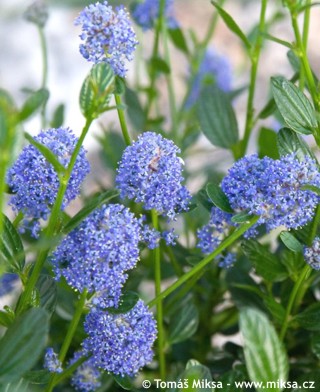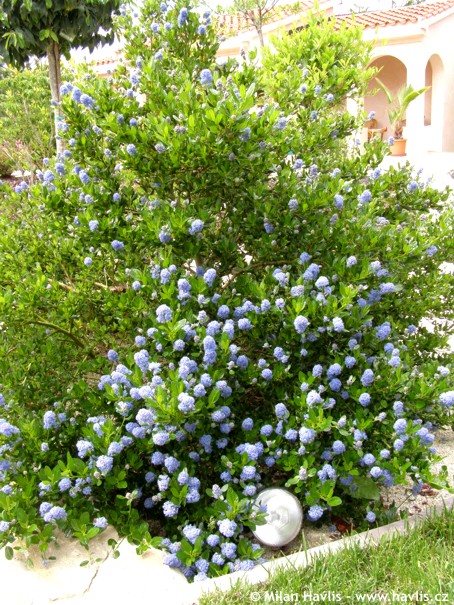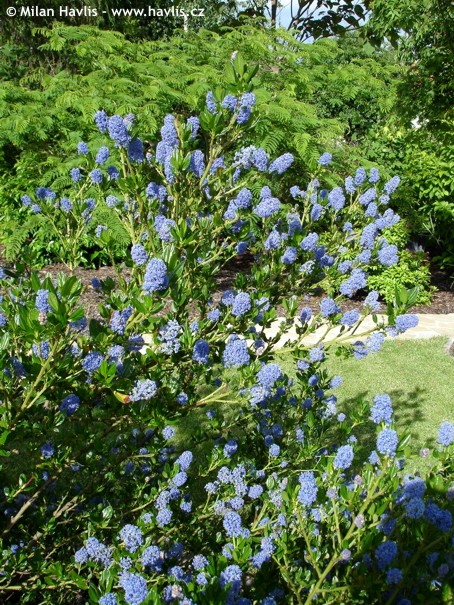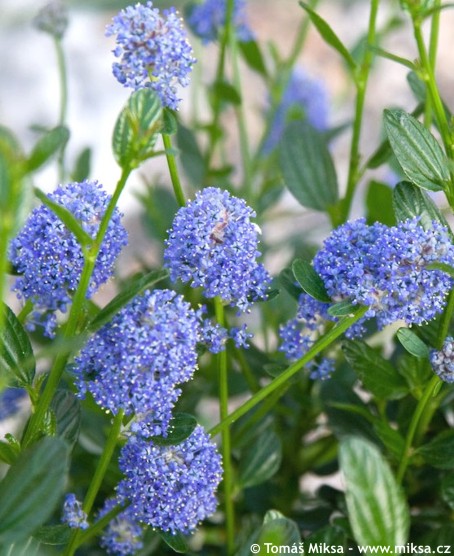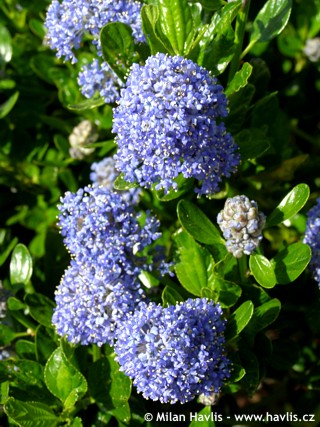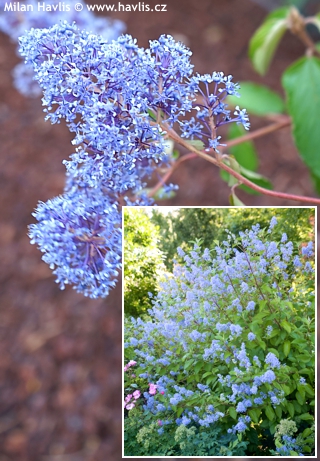Ceanothus thyrsiflorus 'VICTORIA' blueblossom, California lilac
A few years ago I visited an interesting nursery in Belgium and after we made business my eye rested upon a small shrub with tiny, deep green leaves. It looked rather attractive even in February but the nursery owner expressed his doubts about its hardiness in the Czech Republic. So I said I would give it a try. It was definitely worth it because I had never seen such a colour of flowers in my life before.
This charming shrub is called blueblossom or California lilac. It has nothing to do with lilacs though. The flowers are absolutely amazing, not violet, not pale, just unbeatable sky blue. They are formed in rounded, terminal cymes and come out in early June and usually last for about a month. That is another reason to own this gorgeousness. There are so many of them every year that they totally cover the plant. Evergreen leaves are only 2-3 cm long, ovate, dark green, very glossy and deeply veined. When crushed they have an interesting spicy scent.
In England, for example, and other countries with mild winters it grows about 3m high. In our climate it grows about the same tall as wide. But spreading is obviously its middle name because it can make as much as 30 cm horizontally per year when well established. In California it is used for tall, flowering hedges. Well, we will be happy to have it as a solitaire standing beautiful shrub that will also require some shearing or trimming to keep its compact statue and gain density. The denser it gets the hardier it will be over winter. Any form of pruning is recommended immediately after flowering (early July). Unpruned plants may get leggy over a few years.
Now there is a little comment to the chaos about its correct Latin name. I swear it is not my fault if you find it listed as ceanothus impressus on other websites. Some sources even say that it is possibly a cross anyway so it should read just “x” if anything. Luckily, most gardeners are convinced that there are not two varieties called “Victoria”, each from a different group, which would make things even worse. Upon a good advice from a keen gardener and botanist from Canada I decided to stick with ceanothus thyrsiflorus mainly owing to its leaf shape and size.
It needs fertile, permeable soil, adequately moist for the first year and preferably slightly acidic as it might suffer from chlorosis (leaves turn yellow and the plant defoliates when it cannot absorb ferrum from the soil). Do not apply fertilizers for faster growth. Too long shoots will not have enough time to mature and will be killed in winter. You can use a slow release selective fertilizer for profuse flowering or leaf colour. What you definitely must do is to provide a thick layer of mulch, especially before winter. Plant it in a location sheltered from winds - best against a wall or in a closed yard. For reliable overwintering you also need to find a place that will be insolated in summer but shaded in winter - long-lasting winter sun incombination with frost may cause visible injuries.
Growing it in our garden (USDA zone 6) it proved to be fully hardy to some -16° or even -18°C on a sheltered spot, and it survived -24°C with a protection made of 2-3 layers of white woven. Overwrap the plant with this protective fabric when the temperature drops below -16°C for maximum 2 weeks, and take it off when the weather improves. It must not be wrapped all winter, otherwise it will be damaged by strong spring sun. This stunning beauty is worth a portion of extra work.
Last update 30-12-2007

































